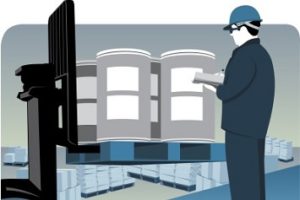The Hazardous Waste Generator Improvements Rule (Rule), finalized this time last year, is in the process of being adopted in each state. A lot of focus has been on the numerous changes that affect hazardous waste large quantity generators (LQGs) (e.g., contingency plans, biennial reports) and those that affect both LQGs and hazardous waste small quantity generators (SQGs) (e.g., container and tank labeling). Less emphasis has been given to those requirements that newly affect only SQGs, which outnumber LQGs in the United States approximately 3 to 1. So, we’ll turn the spotlight on the new requirements that are in store for SQGs.

New Definition
Although a definition of SQG was in the hazardous waste regulations before the Rule was finalized, it was outdated. The definition omitted one of the categories of waste that must be considered in determining the SQG classification—residues from the cleanup of a spill of acute hazardous waste. The Rule defines an SQG as a generator that generates the following amounts in a calendar month:
- Greater than 100 kilograms (kg; 220 lb) but less than 1,000 km (2,200 lb) of nonacute hazardous waste; and
- Less than or equal to 1 kg (2.2 lb) of acute hazardous waste listed in 40 CFR 261.31 or 40 CFR 261.33(e); and
- Less than or equal to 100 kg (220 lb) of any residue or contaminated soil, water, or other debris resulting from the cleanup of a spill, into or on any land or water, of any acute hazardous waste listed in 40 CFR 261.31 or 40 CFR 261.33(e).
Accumulation in Containment Buildings or on Drip Pads
Before the Rule, if an SQG wanted to accumulate hazardous waste in either containment buildings or on drip pads, the generator could only do so by complying with the technical standards for those units, as well as with all the more stringent LQG regulations. These LQG provisions include requirements for personnel training, the development of a full contingency plan, and biennial reporting.
The Rule clarifies that while an SQG must still comply with those units’ technical standards, it does not need to comply with LQG standards. Instead, it remains subject to the SQG requirements, including accumulation limits. However, the SQG must remove all wastes from the drip pad or containment building at least once every 90 days. The SQG must maintain on-site a written description of procedures that are followed to ensure that wastes are removed within 90 days and document each waste removal, including the quantity removed. Specific labeling requirements must also be followed.
Episodic Generation
These new provisions in the Rule are a total win for an SQG. An SQG (or a very small quantity generator) can now maintain its existing generator category if, as a result of a planned or unplanned episodic event, the SQG generates a quantity of hazardous waste in a calendar month sufficient to bump it up into the LQG classification. Under the new provisions, an SQG can generate additional quantities of hazardous waste, exceed its normal generation limits temporarily, yet still maintain its existing generator classification. Of course, in order to take advantage of these provisions, the SQG must comply with specified conditions, such as those involving notification, container or tank labeling (drip pads and containment buildings are not allowed for this purpose), and recordkeeping.
Examples of planned episodic events include tank cleanouts, short-term construction projects, site remediation, equipment maintenance during plant shutdowns, and removal of excess chemical inventories. Unplanned episodic events would include production process upsets, product recalls, excess inventory, accidental spills, or an “act of nature” such as a tornado, hurricane, or flood.
Preparedness, Prevention, and Emergency Procedures
The Rule tweaks the previous preparedness, prevention, planning, and emergency procedures applicable to SQGs to allow greater flexibility and to clarify what’s required.
Regarding posting emergency information “next to the telephone,” the Rule has changed that language to be “next to telephones or in areas directly involved in the generation and accumulation of hazardous waste.”
The Rule clarifies that the SQG “is responsible” for containing a spill and cleaning up the hazardous waste, which means that the SQG itself does not have to train its employees to contain and clean up a spill, but can hire a spill cleanup contractor to do this work.
Although the equipment that an SQG must have on hand to prepare for and respond to an emergency situation has not changed, the Rule has clarified where the equipment should be located. The Rule allows the SQG to determine the most appropriate locations for the necessary equipment. The equipment does not have to be located immediately next to hazardous waste generation and accumulation areas in situations where it would be infeasible or inappropriate for safety reasons to have it there.
Renotification to EPA
Like an LQG, an SQG must submit an initial notification to the U.S. Environmental Protection Agency (EPA) (or state environmental agency) to make the agency aware of its hazardous waste activities and to obtain an EPA identification number. The Rule requires SQGs to renotify the EPA by March 1 of every even-numbered year on EPA Form 8700-12. The purpose of the renotification is to keep the EPA in the loop as to the type of regulated activities on the SQG site and other information about the generator. But don’t worry just yet, this renotification does not go into effect for SQGs until March 1, 2020.
